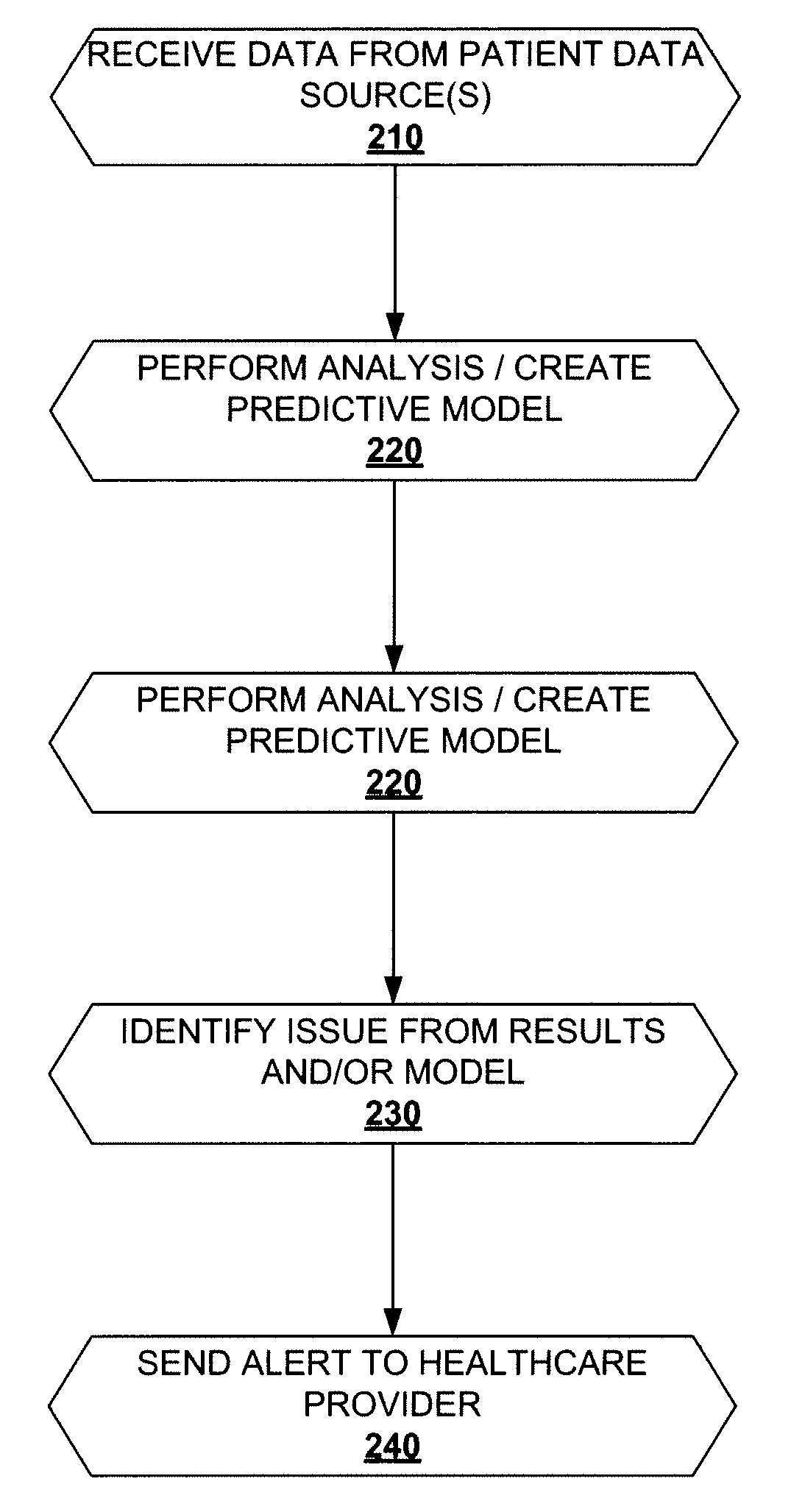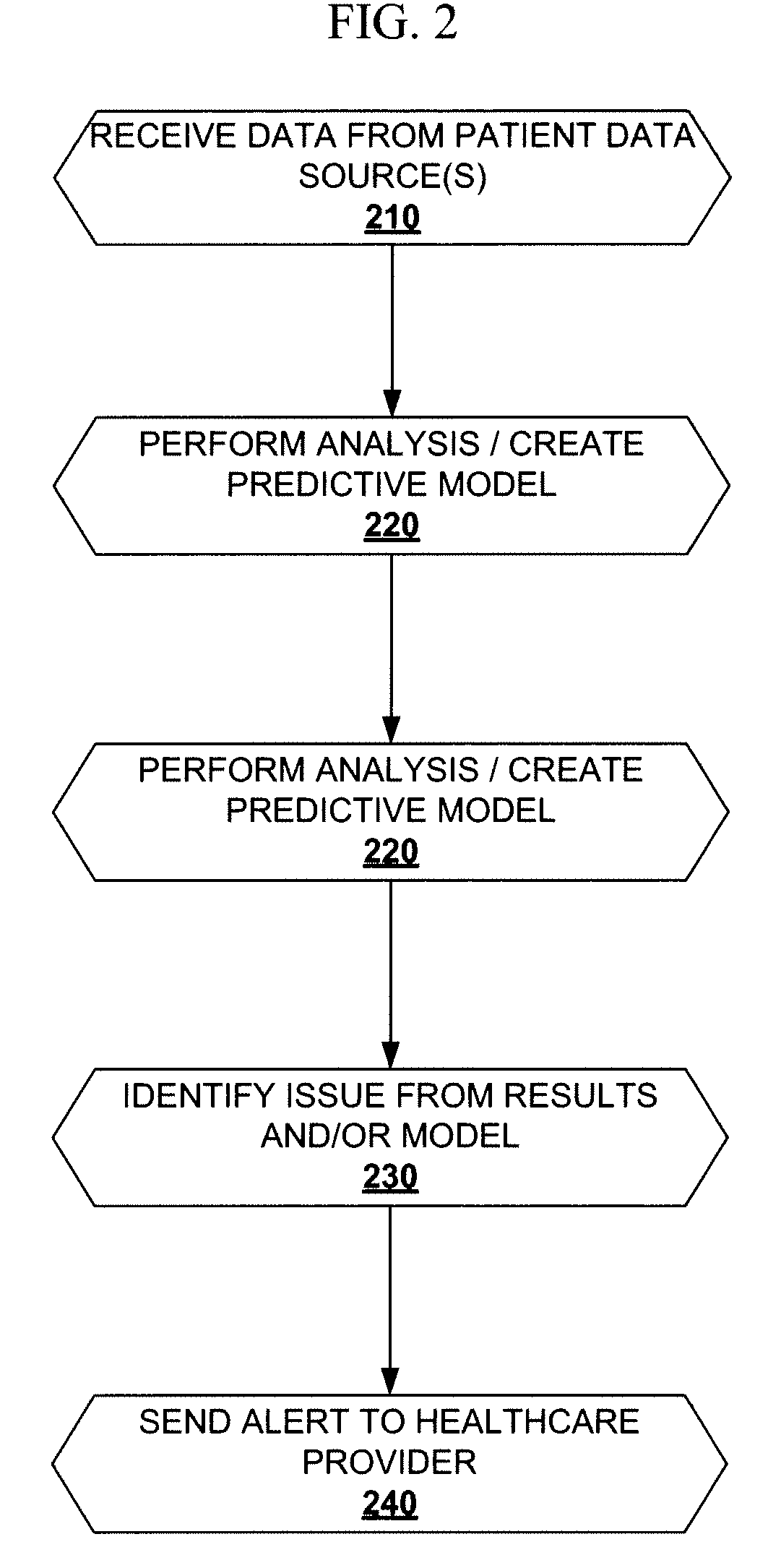Method and System For Active Patient Management
a patient management and active patient technology, applied in the field of disease management, can solve problems such as inability to accurately describe future medical costs, use risk stratification, and difficulty in providing proper care to patients
- Summary
- Abstract
- Description
- Claims
- Application Information
AI Technical Summary
Benefits of technology
Problems solved by technology
Method used
Image
Examples
Embodiment Construction
[0011]The present invention provides methods and systems for active patient management. A central system can receive data about one or more patients, from, for example, implantable medical devices within the patient, healthcare providers, pharmacies, and insurance entities. As used herein, a “patient” may be any person about and / or from whom data is collected. A patient may have or be at risk of having or developing a health condition that may warrant monitoring, though such condition is not necessary for operation of the invention. Collected patient data can include, for example, healthcare histories, current and historical prescription data, insurance claim information, and physiological data. As used herein, a “patient data source” refers to an aggregate type of data source, such as physiological sensors, medical records, and consumer data reporting sources. Each patient data source may include multiple records or generators of information. For example, “physiological sensors” ma...
PUM
 Login to View More
Login to View More Abstract
Description
Claims
Application Information
 Login to View More
Login to View More - R&D
- Intellectual Property
- Life Sciences
- Materials
- Tech Scout
- Unparalleled Data Quality
- Higher Quality Content
- 60% Fewer Hallucinations
Browse by: Latest US Patents, China's latest patents, Technical Efficacy Thesaurus, Application Domain, Technology Topic, Popular Technical Reports.
© 2025 PatSnap. All rights reserved.Legal|Privacy policy|Modern Slavery Act Transparency Statement|Sitemap|About US| Contact US: help@patsnap.com



